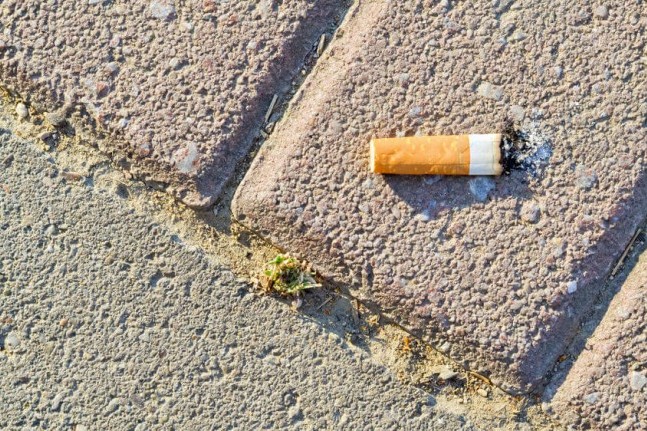How to pave a road with cigarette butts
Cigarette butts (CB) are everywhere – 6 trillions of cigarettes are produced every year worldwide leading to 1.2 million tonnes of discarded cigarette butts. Most of them land up in the environment, making cigarette butts the most common type of litter globally.
Cigarette butts take a long time to break down while the toxic chemicals are released into creeks, rivers and the ocean.
The researchers also found that by reducing the bulk density of AC caused by encapsulating CBs, increases the porosity especially when encapsulating in higher grade bitumen and this leads to lowered thermal conductivity.
In a bid to find a solution to this growing problem, researchers from RMIT University in Melbourne, Australia investigated the possibility of mixing cigarette butts into different classes of bitumen and paraffin wax and incorporating them into asphalt concrete (AC) for road construction.
Various studies were undertaken- the first one incorporated different amounts of CBs encapsulated with different classes of bitumen (C170, C320, C600), and AC mix manufactured with Class 170 bitumen.
The second one incorporated mixing 10kg/m3 of CBs encapsulated with paraffin wax in AC mixes that were manufactured with C170 and C320 classes of bitumen.
All the samples, including the control sample which had no CBs were tested for mechanical and volumetric properties, including stability, flow, resilient modulus, bulk density, maximum density, air voids, and voids in mineral aggregates.
The CBs were encapsulated with bitumen and paraffin wax to lock in the chemicals and prevent any leaching of harmful toxins which are trapped in cigarette filters – this is the only way to control these chemicals.
The first mix gave results which satisfied requirements for light, medium and heavy traffic conditions.
In the second type of mix, the changes in mechanical and volumetric properties for 10kg/m3 of CBs only satisfied conditions for light traffic conditions for road pavements.
The researchers also found that by reducing the bulk density of AC caused by encapsulating CBs, increases the porosity especially when encapsulating in higher grade bitumen and this leads to lowered thermal conductivity.
The findings of this research are valuable in developing a product which can solve the CB waste problem and is useful in reducing Urban Heat Island effect commonly found on urban roads. It also helps to create a new construction material which can be put to some good use.
Soon the roads you drive on will be full of cigarette butts but in a good way!
Source: Construction and Building Materials








